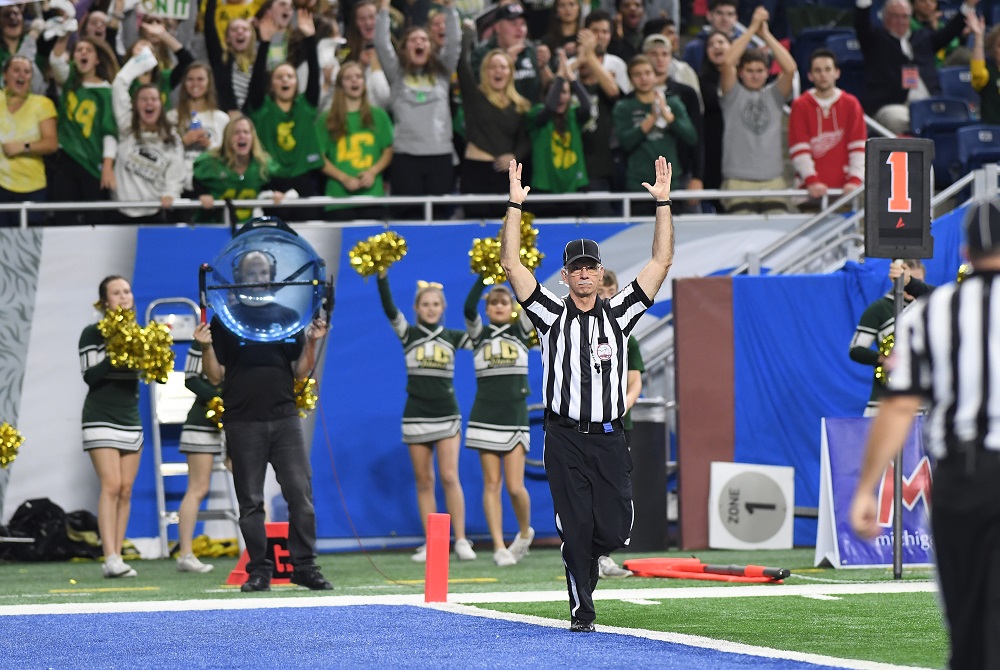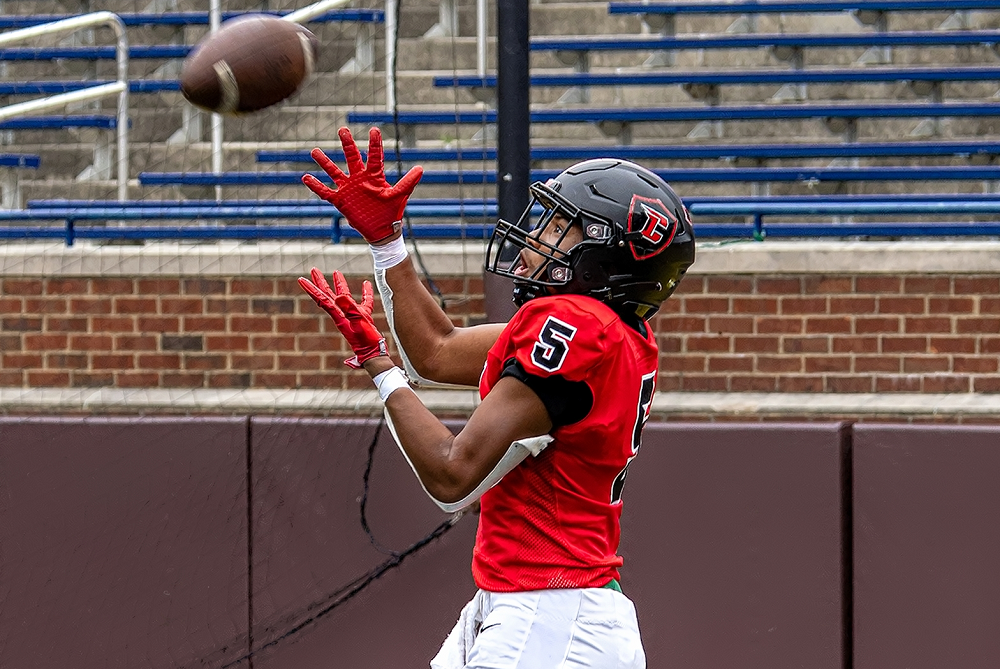
Be the Referee: Receiver Carried Out of End Zone
By
Sam Davis
MHSAA Director of Officials
November 4, 2021
Be The Referee is a series of short messages designed to help educate people on the rules of different sports, to help them better understand the art of officiating, and to recruit officials.
Below is this week's segment – Receiver Carried Out of End Zone - Listen
A football play for you to rule on today. The quarterback throws a pass to an eligible receiver in the end zone. The receiver jumps and makes the catch, but before he lands, a defensive player wraps him up and carries him out to the 2-yard line, where the receiver finally touches the ground.
What’s the call? Is the ball spotted at the 2-yard line where the receiver finally made contact with the ground? Or is it a touchdown?
Send out the extra-point team because it’s a touchdown. The receiver’s forward momentum was stopped in the end zone, while he had possession of the ball … which is considered a touchdown catch. He does not have to get a foot or any other body part down in the end zone for it to count.
Previous editions
Oct. 28: Volleyball Back-Row Block – Listen
Oct. 21: Soccer Disallowed Goal – Listen
Sept 30: Field Goal Falls Short – Listen
Sept. 23: Volleyball Obstruction – Listen
Sept. 16: Catch or No Catch – Listen
Sept. 9: Intentional Grounding – Listen
Sept. 2: Pass Interference – Listen
Aug. 26: Protocols and Mechanics – Listen

Be the Referee: Football Rules Differences
By
Sam Davis
MHSAA Director of Officials
August 23, 2023
Be The Referee is a series of short messages designed to help educate people on the rules of different sports, to help them better understand the art of officiating, and to recruit officials.
Below is this week's segment – Football Rules Differences - Listen
The first week of the high school football season is always exciting … and sometimes confusing. Here are some – not all – differences between the high school game and what you see on Saturdays and Sundays.
In high school, there is no such thing as an uncatchable ball when judging pass interference. It is a penalty if there is illegal contact, whether the ball is catchable or not.
In overtime, high school teams start with the ball at the 10-year line – not the 25 like in college. And in high school overtime, you are only able to get a first down via penalty. And, at no time is a high school team required to go for two points.
And on extra point plays, if the defense gains possession, the try is over. The defense cannot return the ball for two points.

